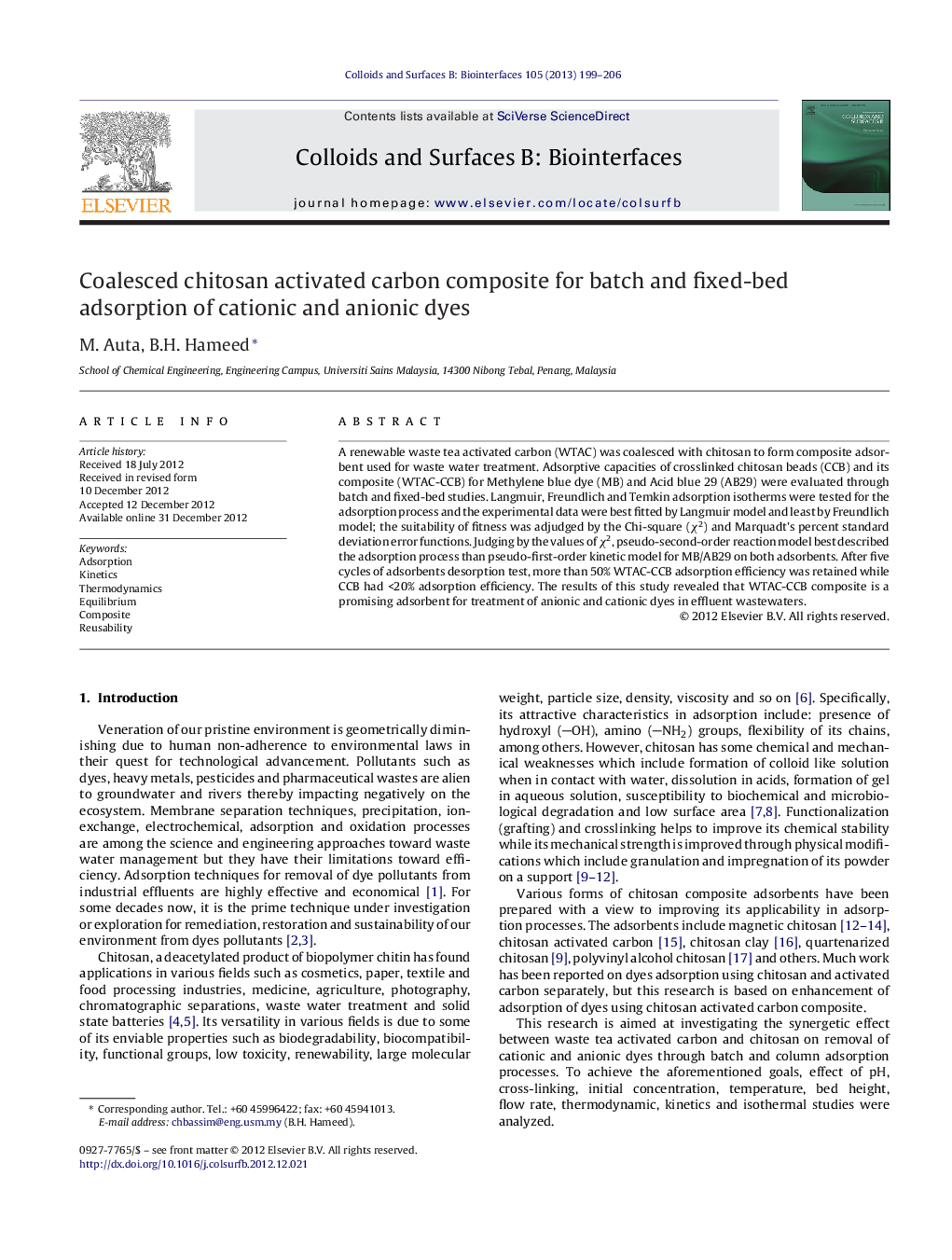| Article ID | Journal | Published Year | Pages | File Type |
|---|---|---|---|---|
| 600231 | Colloids and Surfaces B: Biointerfaces | 2013 | 8 Pages |
A renewable waste tea activated carbon (WTAC) was coalesced with chitosan to form composite adsorbent used for waste water treatment. Adsorptive capacities of crosslinked chitosan beads (CCB) and its composite (WTAC-CCB) for Methylene blue dye (MB) and Acid blue 29 (AB29) were evaluated through batch and fixed-bed studies. Langmuir, Freundlich and Temkin adsorption isotherms were tested for the adsorption process and the experimental data were best fitted by Langmuir model and least by Freundlich model; the suitability of fitness was adjudged by the Chi-square (χ2) and Marquadt's percent standard deviation error functions. Judging by the values of χ2, pseudo-second-order reaction model best described the adsorption process than pseudo-first-order kinetic model for MB/AB29 on both adsorbents. After five cycles of adsorbents desorption test, more than 50% WTAC-CCB adsorption efficiency was retained while CCB had <20% adsorption efficiency. The results of this study revealed that WTAC-CCB composite is a promising adsorbent for treatment of anionic and cationic dyes in effluent wastewaters.
Graphical abstractFigure optionsDownload full-size imageDownload as PowerPoint slideHighlights► Composite of waste tea activated carbon and chitosan (WTAC-CCB) was prepared. ► Methylene blue/Acid blue 29 were adsorbed on WTAC-CCB via batch and fixed-bed studies. ► Effect of pH, concentration, rates and bed-depth on the adsorption were studied. ► Reusability of WTAC-CCB for Methylene blue and Acid blue 29 adsorptions was studied.
